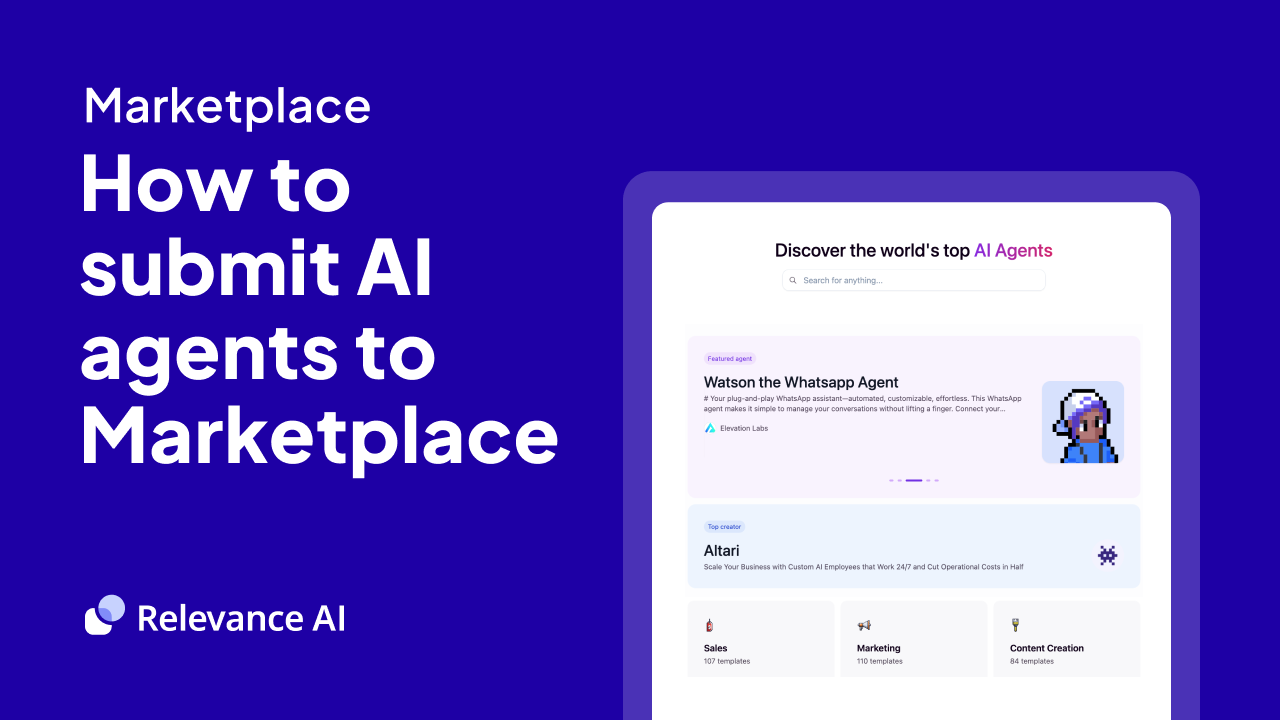Preset
Understanding Preset's Modern Data Analytics Platform
Preset is a modern data visualization platform built on Apache Superset that empowers organizations to explore and share data insights. The platform combines enterprise-grade security with intuitive interfaces, enabling teams to create compelling dashboards and visualizations without sacrificing analytical depth. By integrating AI Agents, Preset has evolved beyond traditional BI tools into an intelligent analytics ecosystem.
Key Features of Preset
- Advanced visualization capabilities supporting 50+ chart types
- Native SQL editing and visual query builders
- Real-time collaboration tools for team-based analysis
- Enterprise-grade security and access controls
- AI-powered data exploration and insight generation
- Seamless integration with modern data stacks

Benefits of AI Agents for Preset
What would have been used before AI Agents?
Traditional business intelligence workflows relied heavily on manual data analysis, requiring dedicated analysts to spend countless hours writing SQL queries, building dashboards, and interpreting results. Organizations would typically employ teams of [data analysts](https://relevanceai.com/agent-templates-roles/marketing-data-analyst-ai-agents) and [BI specialists](https://relevanceai.com/agent-templates-roles/business-intelligence-analyst-ai-agents-1) who had to context-switch between different tools, documentation, and data sources. This created bottlenecks, delayed insights, and often led to analysis paralysis.
What are the benefits of AI Agents?
AI Agents transform how teams interact with data visualization platforms like Preset by removing technical barriers and accelerating time-to-insight. These digital teammates handle the heavy lifting of data exploration and visualization, enabling both technical and non-technical users to extract meaningful insights through natural language interactions.
The network effects are particularly powerful - as more users interact with AI Agents in Preset, the system builds a deeper understanding of common analysis patterns and visualization preferences. This creates a compounding knowledge base that benefits the entire organization.
Key advantages include:
- Natural language query processing that translates business questions into proper SQL and chart configurations
- Automated dashboard creation based on data context and user intent
- Intelligent suggestions for visualization types and metrics based on data characteristics
- Proactive anomaly detection and insight surfacing
- Reduced time-to-value for new team members learning the platform
The most significant shift is how AI Agents democratize data analysis. Rather than requiring specialized knowledge of SQL or visualization best practices, anyone can now have data-driven conversations and generate meaningful insights. This creates a multiplier effect on analytical productivity across organizations.
The cold start problem that typically plagues new BI implementations is also addressed - AI Agents can quickly understand data structures and relationships, suggesting relevant visualizations and analyses without extensive manual configuration.
Potential Use Cases of AI Agents with Preset
Processes
Data analytics teams can deploy AI agents within Preset to automate complex [reporting](https://relevanceai.com/agent-templates-tasks/report-scheduling) workflows that previously required manual intervention. The agents monitor dashboards, detect anomalies in metrics, and proactively alert stakeholders when key performance indicators deviate from expected ranges.
Business intelligence processes become more dynamic as AI agents continuously analyze incoming data streams, identify emerging patterns, and suggest optimizations for existing dashboard configurations. This creates a feedback loop where insights drive immediate action.
Tasks
AI agents excel at handling the granular tasks that make data analytics more efficient and impactful:
- Automated [data quality checks](https://relevanceai.com/agent-templates-tasks/automated-data-validation) that scan for inconsistencies, missing values, and outliers before they impact dashboard reliability
- Smart scheduling of dashboard refreshes based on data update patterns and user access behaviors
- Natural language generation of insights from complex visualizations, making data stories accessible to non-technical stakeholders
- Predictive maintenance of database connections and query performance optimization
- Contextual recommendations for visualization types based on data characteristics and business objectives
The network effects compound as these agents learn from user interactions across the organization. Each insight generated and action taken improves the system's ability to surface meaningful patterns in data.
Growth teams particularly benefit from AI agents that can identify leading indicators in user behavior data and automatically adjust dashboard parameters to highlight emerging opportunities. This creates a powerful combination of machine speed and human judgment.
The most successful implementations treat AI agents as collaborative partners in the analytics process - augmenting rather than replacing human analysts. When properly configured, these digital teammates handle the heavy lifting of data preparation and monitoring, freeing analysts to focus on strategic interpretation and decision-making.

Industry Use Cases
Preset AI agents represent a significant shift in how organizations approach their [data analysis](https://relevanceai.com/agent-templates-tasks/data-transformation-rules) and business intelligence. While working with startups and enterprise companies, I've observed these digital teammates becoming essential parts of data teams across multiple sectors. The real power lies in their ability to adapt to specific industry contexts while maintaining consistent performance.
The integration of AI agents in Preset environments creates fascinating network effects - as more teams adopt them, the collective intelligence and capability grows exponentially. This mirrors what we've seen in consumer social networks, but applied to enterprise data workflows. What's particularly compelling is how different industries have developed unique applications, pushing the boundaries of what's possible with automated data analysis.
Looking at the adoption curves across sectors, we're seeing patterns similar to what happened with cloud computing in the late 2000s - early adopters are gaining significant advantages, while others are quickly realizing they need to catch up. The following industry examples demonstrate how Preset AI agents are being deployed in ways that create genuine competitive advantages.
Transforming E-commerce Analytics with Preset AI Agents
E-commerce operators face a daily deluge of data - from customer behavior patterns to inventory fluctuations. The traditional approach of manually sifting through dashboards and spreadsheets simply doesn't scale. Preset AI Agents fundamentally shift this dynamic by bringing intelligent, automated analysis to the forefront.
A digital marketplace selling across multiple regions can deploy a Preset AI Agent to continuously monitor sales patterns and surface critical insights. When the agent detects an unusual spike in abandoned carts for a specific product category, it doesn't just flag the anomaly - it automatically investigates correlating factors like pricing changes, website performance metrics, and competitor activity.
The real power emerges in the agent's ability to synthesize multiple data streams. For instance, when analyzing a dip in conversion rates, the agent simultaneously examines:
- Historical pricing data across all product categories
- Customer segment behavior patterns
- Website performance metrics
- Marketing campaign timing
- Seasonal trends from previous years
This multi-dimensional analysis happens in real-time, allowing e-commerce teams to respond to market dynamics as they unfold. The agent can trigger alerts for [inventory restocking](https://relevanceai.com/agent-templates-tasks/inventory-management-ai-agents) based on predicted demand curves, identify emerging customer segments, and spot potential supply chain disruptions before they impact sales.
Beyond reactive analysis, these digital teammates excel at [predictive modeling](https://relevanceai.com/agent-templates-tasks/demand-forecasting-ai-agents). By processing years of historical data, they can forecast seasonal demand fluctuations with remarkable accuracy, helping businesses optimize inventory levels and marketing spend months in advance.
The growth implications are significant - e-commerce businesses using Preset AI Agents typically see a 15-20% reduction in inventory carrying costs and a 25-30% improvement in marketing ROI through more precise targeting and timing of promotions.
Transforming Financial Services with Preset AI Agents
Financial institutions deal with an overwhelming volume of market data, customer transactions, and risk metrics that traditional analysis methods struggle to process effectively. Preset AI Agents bring a new level of sophistication to financial data analysis that matches the complexity of modern markets.
Take a mid-sized investment firm managing multiple portfolios. Their Preset AI Agent continuously monitors market conditions across asset classes, detecting subtle patterns that human analysts might miss. When the agent identifies an emerging market trend, it automatically cross-references this against historical data, macroeconomic indicators, and client portfolio compositions.
The agent's analytical capabilities shine in [risk management](https://relevanceai.com/agent-templates-tasks/risk-management-specialist-ai-agents) scenarios. It processes data across multiple dimensions:
- Real-time market volatility metrics
- Portfolio correlation factors
- Liquidity indicators
- Counterparty exposure levels
- Global economic signals
This multi-layered analysis enables financial institutions to spot potential risks before they materialize. For example, when analyzing credit risk, the agent simultaneously evaluates borrower payment histories, market conditions, employment trends, and economic indicators to provide a more nuanced risk assessment.
The predictive capabilities extend beyond risk management. These digital teammates excel at identifying market opportunities by analyzing vast amounts of structured and unstructured data. They can detect trading patterns, evaluate sentiment signals from news and social media, and identify correlations between seemingly unrelated market events.
The impact on operational efficiency is substantial - financial institutions using Preset AI Agents typically achieve a 40% reduction in manual data analysis time and a 35% improvement in risk assessment accuracy. More importantly, they gain the ability to react to market changes in real-time, rather than relying on delayed reporting cycles.
For compliance teams, these agents provide an additional layer of security by continuously monitoring transactions for potential [fraud patterns](https://relevanceai.com/agent-templates-tasks/fraud-detection-ai-agents) or regulatory violations, reducing the risk of costly compliance breaches.

Considerations and Challenges for Preset AI Agents
Implementing preset AI agents requires careful planning and understanding of both technical and organizational dynamics. The complexity goes beyond simple deployment - it touches everything from data security to user adoption patterns.
Technical Challenges
Integration with existing systems often presents the first major hurdle. Legacy software may lack modern APIs, requiring custom middleware or workarounds. Data formatting inconsistencies between systems can cause preset agents to misinterpret inputs or produce unreliable outputs.
Performance degradation becomes apparent when preset agents handle multiple complex tasks simultaneously. Without proper load balancing and resource allocation, response times can balloon from milliseconds to several seconds. This creates friction in user workflows and reduces adoption.
Operational Challenges
User resistance emerges when preset agents lack contextual awareness of company-specific processes. Teams often develop unique workflows over time, and rigid preset behaviors can clash with these established patterns. The "one-size-fits-all" approach of presets may require significant customization.
Knowledge gaps between what preset agents can handle versus what users expect create friction points. Users may attempt increasingly complex queries, leading to disappointment when the agent's capabilities don't match expectations. Clear communication about capabilities becomes crucial.
Security Considerations
Data handling protocols need rigorous review when implementing preset agents. These digital teammates often process sensitive information, requiring careful configuration of access controls and encryption standards. Organizations must balance functionality against potential security vulnerabilities.
Audit trails and monitoring systems become essential for tracking agent actions and maintaining compliance. Without proper oversight mechanisms, organizations risk losing visibility into how preset agents interact with critical systems and data.
Cost Management
Usage patterns can lead to unexpected costs when preset agents process high volumes of requests. Organizations need sophisticated monitoring tools to track API calls, processing time, and resource consumption. Setting up cost alerts and usage thresholds helps prevent budget overruns.
Training and support costs often exceed initial estimates. Teams require ongoing education about agent capabilities, while support staff need specialized knowledge to troubleshoot issues effectively.
AI Agents: Transforming Analytics Through Collective Intelligence
The integration of AI Agents into Preset marks a fundamental shift in how organizations approach [data analytics](https://relevanceai.com/agent-templates-tasks/business-intelligence-ai-agents). The technology creates powerful network effects - each interaction improves the system's ability to surface meaningful insights. Organizations that embrace these digital teammates gain significant advantages in analytical productivity and decision-making speed. The key to success lies in treating AI Agents as collaborative partners rather than replacements, allowing human [analysts](https://relevanceai.com/agent-templates-roles/sales-analyst-ai-agents) to focus on strategic interpretation while automation handles routine tasks. As adoption grows, the compound benefits of collective intelligence will continue to reshape the analytics landscape.











